Engineers, between being architects and entrepreneurs
Constructeurs from the École Centrale de Paris in Buenos Aires, 1890-1920
DOI:
https://doi.org/10.35305/23626097v9i17.377Keywords:
architecture education, École Centrale de Paris, history of techniquesAbstract
The role of the French tradition in the education of architects in Argentina in the late nineteenth and the early twentieth century is studied mainly from the perspective of the Beaux-Arts system and its successive attempts to separate from engineering at both the academic and professional levels. This work acknowledges that in France itself there were different approaches to architecture which were proposed by different schools, and it leads to focus on the culture of civil engineers from the École Centrale des Arts et Manufactures de Paris. It seeks to examine the school experience of an Argentinian centralien, Carlos Agote (1866-1950), and his career in Buenos Aires which was linked to a network of former students on both sides of the Atlantic. Specialized as a constructeur, Agote positioned himself at the crossroads of different savoirs and savoir-faire enabling rich collaborations from diverse actors: Beaux-Arts architects, builders, entrepreneurs, manufacturers. Following the methods and concepts of the history of techniques, the proposal is to study this interaction through the archives of the École Centrale as well as business archives.
Downloads
Metrics
References
Agote, C. (1887). [Dossier de estudiante]. Archivo de la ECP (AN 20170270/908), París.
Agote, C. (1890). [Proyecto final, memoria y atlas]. Archivo de la ECP (AN 20170270/1935-2333), París.
Almandoz Marte, A. (Dir.). (2002). Planning Latin America’s Capital Cities. Londres y Nueva York, Inglaterra y EEUU: Routledge.
Belhoste, J.-F. (Dir.). (2004). Le Paris des Centraliens, bâtisseurs et entrepreneurs. París, Francia: Action artistique de la ville de Paris.
Bertrand R. y Calafat G. (2018). La microhistoire globale: Affaire(s) à suivre. Annales. Histoire, Sciences Sociales EHESS, (1), 1-18.
Bétard, É. (1895). [Dossier de estudiante]. Archivo de la ECP (AN 20170270/1218), París.
Bétard, J. (1905). [Dossier de estudiante]. Archivo de la ECP (AN 20170270/1253), París.
Boussois, C.-L. (1908). Les concours d’architecture de l’année scolaire 1907-1908. París, Francia: Auguste Vincent.
Canovi A. y Damianovich E. (1898). La nueva casa de La Prensa. Anales de la Sociedad Científica Argentina 46, 257-264.
Chanourdie, E. (1895). Arquitectura y arquitectos. Revista técnica, (9), 135-137.
Chanourdie, E. (1898). Erección de la estatua de La Prensa. Revista técnica, (72), 268-269.
École Centrale des Arts et Manufactures de Paris (1888). [Programa y reglamento para estudiantes]. Archivo de la ECP (AN 20170270/2648), París.
École Centrale des Arts et Manufactures de Paris (1887-1890). [Dossier de la promoción 1887-1890]. Archivo de la ECP (AN 20170270/1184), París.
École Centrale des Arts et Manufactures de Paris (1890). [Trabajos de vacaciones de los estudiantes]. Archivo de la ECP (AN 20170270/1623-1651), París.
Ermakoff, A. (2014). Trier, soigner, administrer. Savoirs et pratiques du Conseil général des hospices de Paris (1801-1848). Presses Universitaires de France, Cahiers du Centre Georges Canguilhem, 1(6), 27-46.
Delamare, R. (1906). [Proyecto final de Imprimerie d’un journal quotidien]. Archivo de la ECP (AN 20170270/2032-2408), París.
Denfer, J. (1881-1883). [Carpeta del curso de arquitectura]. Archivo de la ECP (AN 20170270/2791), París.
Facultad de Ciencias Naturales, Físicas y Matemáticas de Buenos Aires. Reforma del plan de estudios. (1896). Revista técnica, (14), 28-29.
Garric, J.-P. (2017). The French Beaux-Arts. En M. Bressani y C. Contandriopoulos. (Ed.), The Companion to the History of Architecture III. Chichester/Malden, Inglaterra/EEUU: John Wiley & Sons.
Gorelik A. y Arêas Peixoto, F. (Dir.). (2016). Ciudades sudamericanas como arenas culturales. Buenos Aires, Argentina: Siglo XXI editores.
Grand, L. (2005). L’architecture asilaire au XIXe siècle, entre utopie et mensonge. Bibliothèque de l’École des chartes, 163(1), 165-196.
Grelon, A. (2000). Du bon usage du modèle étranger: la mise en place de l’Ecole centrale des arts et manufactures. Bulletin de la Sabix, (26), 47-52.
Guillet, L. (1929). Cent ans de la vie de l’École centrale des arts et manufactures, 1829-1929. París, Francia: M. de Brunoff.
Hamon, F. (1997). L’enseignement de l’architecture industrielle à l’École centrale des arts et manufactures 1832-1914 (Tesis doctoral). Université Paris IV Sorbonne, Francia.
Hary, P. (1916). Curso de teoría de la arquitectura. Revista de Arquitectura, (5), 12.
Hennebique, Bétons armés (1913). [Dossier la Bolsa de Comercio de Buenos Aires]. Centre d’archives d’architecture contemporaine (76 Ifa 2570), París.
La estatua de La Prensa. (1898, noviembre 12). Caras y Caretas, 13.
Lambert, G. y Nègre, V. (2012). L’histoire des techniques. Les Cahiers de la recherche architecturale et urbaine, (26-27), 76-85.
Lappas, B. (1950). Carlos Agote. Notice nécrologique. Bulletin de l'Association Amicale des Anciens Élèves de l’École Centrale des Arts et Manufactures, 615, 159.
Le Monnier, E. (1898). Garnier y la arquitectura bonaerense. Revista Técnica, (70), 231-232.
Liernur, J. F. (2001). Arquitectura en la Argentina del siglo XX. La construcción de la modernidad. Buenos Aires, Argentina: Fondo Nacional de las Artes.
Muller, É. (1888). [Atlas del curso de arquitectura]. Archivo de la ECP (AN 20170270/2977), París.
Nègre, V. y Sandrine, V. (2020). L’Entrepreneur de bâtiment: nouvelles perspectives (Moyen Âge-XXe siècle). Aedificare. Revue internationale d’histoire de la construction, (5), 23-39.
Nègre, V. (2018). La arquitectura y la construcción en los cursos de la École Centrale des Arts et Manufactures y del Conservatoire National des Arts et Métiers en París durante el siglo XIX (Traducción Andrés Ávila Gómez y Diana Carolina Ruiz). A&P Continuidad, (9), 10-21. [versión en francés, INHA, 2011]
Picon, A. (1998). L’invention de l’ingénieur moderne: l’École des Ponts et Chaussées, 1747-1851. París, Francia: Presses de l’ENPC.
Portier, P. (1887). [Cuaderno de croquis]. Archivo de la ECP (AN 20170270/1621), París.
Raj, K. (2016). Go-Betweens, Travelers, and Cultural Translators. En B. Lightman. (Ed.), A Companion to the History of Science. Chichester/Malden, , Inglaterra/EEUU: John Wiley & sons.
Rojas, M., Shmidt, C. y Silvestri, G. (2004). Enseñanza de arquitectura. En F. Aliata y J. F. Liernur. (Ed.), Diccionario de Arquitectura en la Argentina. Estilos, obras, biografías, instituciones, ciudades, 3. Buenos Aires, Argentina: AGEA.
Shmidt, C. (2012). Palacios sin reyes. Arquitectura pública para la capital permanente. Buenos Aires, 1880-1890. Rosario, Argentina: Prohistoria.
Sociedad Central de Arquitectos (1904). [Ficha de Socio de Carlos Agote]. Biblioteca Alejandro Christophersen, Buenos Aires.
Tollet, C. (1894). Les hôpitaux modernes au XIXe siècle : description des principaux hôpitaux français et étrangers. París, Francia: Tollet.
Vérin, H. (1992). L’identité de “l’ingénieur”: quelques repères historiques. Recherche & Formation, (29), 11-20.
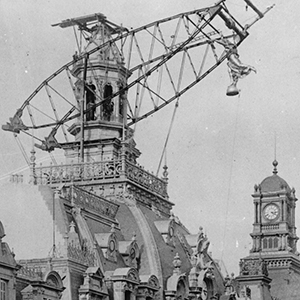
Published
How to Cite
Issue
Section
License
Open access policy
A&P Continuidad is a non-profit and open access publication. According to Mexico Declaration on Cultural Policies, the journal distribution is submitted to Creative Commons Attribution-Noncommercial-ShareAlike 4.0 International Public License (CC BY-NC-SA). “Neither the commercial use of the original work nor that of the possible derivative works are allowed. The distribution of derivative works should be submitted to the license regulating the original work. This license is not free.”
A&P Continuidad authorizes the partial or full reproduction of texts and graphs provided that the source is cited. Authors are exclusively responsible for the criteria expressed in the articles which do not necessarily reflect the opinion of the Editorial Committee or that of the Direction Board. The copyright of the published articles pertains to their authors or publishers.
Transfer of rights
The acceptance of an article to be published implies the author’s transfer of rights to the journal. Authors continue to have the right to use the material in future books or publications, approve or veto the republication of their works as well as the rights related to patents or other rights. Transfer of rights form may be downloaded here.



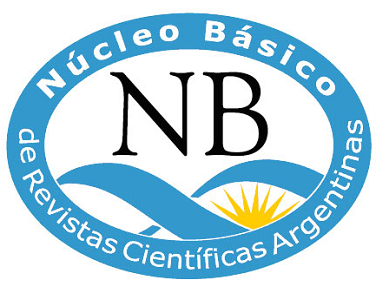


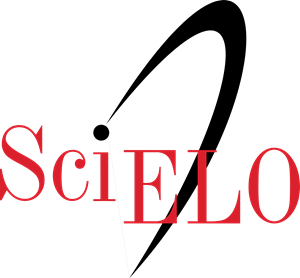



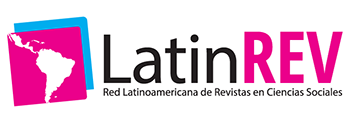

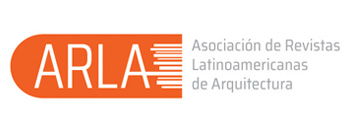



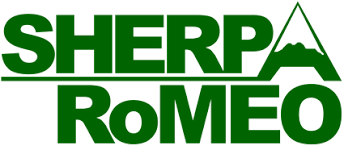









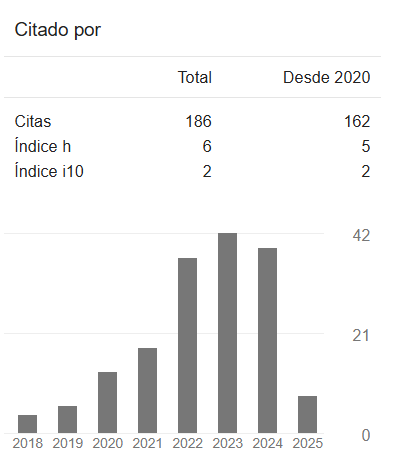


 This OJS site and its metadata are under a
This OJS site and its metadata are under a 

